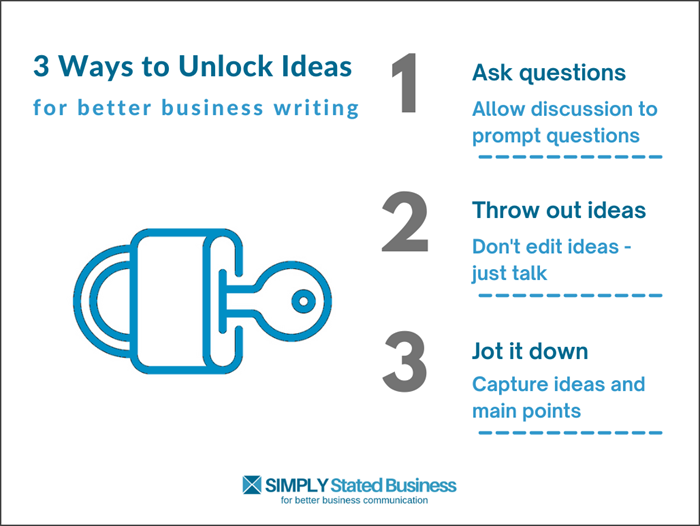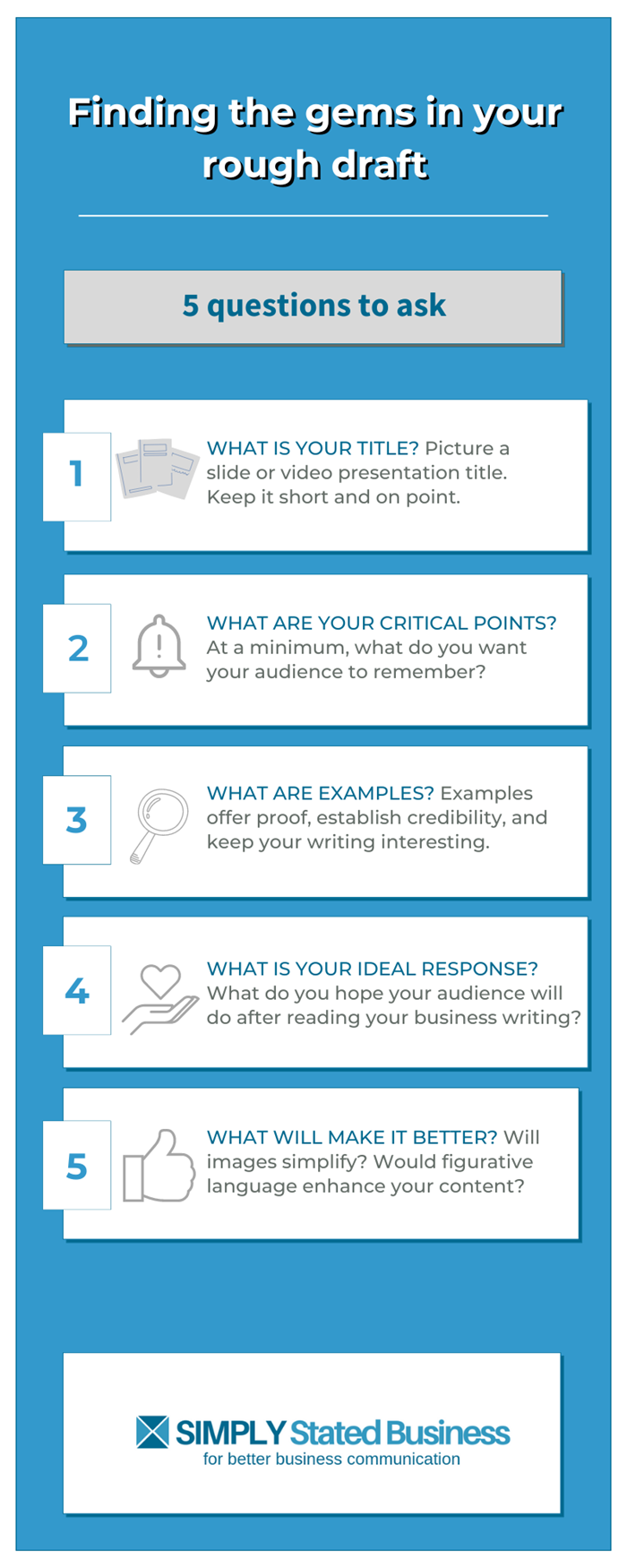 Have you ever seen a raw diamond? It has its own beauty but what emerges when it’s cut and polished is the stone at its best. Raw, uncut business writing is like that.
Have you ever seen a raw diamond? It has its own beauty but what emerges when it’s cut and polished is the stone at its best. Raw, uncut business writing is like that.
One of the joys of writing is discovering the gems that form the final version. Whether you are writing for someone else or expressing your own ideas, start by letting the ideas flow.
Business Writing: Roughing It
During my freelancing career I have done a lot of ghostwriting.
Some clients are extremely comfortable in sharing ideas and the points they want to make. Others struggle with what they want to say.
Illustrated below is a method I use to help clients overcome that obstacle.

You can use the same technique, even if you are writing for yourself. I call this process “roughing it.”
Ask questions – Throw out ideas – Jot it down
Hey, I’m a believer in talking to myself. I have some of my most enlightening discussions. 😊 So, ask yourself:
- What topic do you want to write about? If you don’t have an answer, try my mind-mapping technique.
- Has it been done before? Of course, everything has been written before. But that’s okay.
- How can you make it different? We each have our own unique traits and views. Check out what’s been written before and look for a hidden gem you can make your own.
How do you find the gems? Here are a few ideas.
Capturing Gems
Sometimes my clients need help getting started. I use the following questions (or similar variations) to get the juices flowing.
Tip: If writing for yourself, ask yourself the same questions. Then write down your responses.

- Title – By thinking title, it helps you keep it concise and on point. You focus on the theme.
- Critical points – Prioritize points if you want to, but don’t let that hinder the process. If you’re not sure, write them down as they come to you. You can figure out the flow later.
- Examples – Examples help your audience buy in to your message and offer an incentive to keep reading.
- Response – Don’t be afraid to tell your audience what to do – Call Today, Schedule an Appointment, Download More Information.
- Make it better – Take a breather before giving your business writing one last look. Use the tricks of the trade – storytelling, figurative speech, images – to make it the best it can be.
The questions start the ideas flowing. You’ll find yourself writing fast and furiously to capture all the ideas.
Sifting Through the Notes
Does your desk look like the drawers exploded? I hit a point when the spewed paper makes me scream in frustration. I know it’s time to stop and organize.
When you first look at your notes from your questions and ideas, you may also think something exploded. And it’s not pretty. But don’t let the jumble of words overwhelm you.
Sift through the ideas, rearrange them, organize them. I’m an outline person. I know some hate the idea of creating outlines. You do you. Whatever works.
After looking at the final draft, review it for ways to strengthen the content.
- Sometimes a critical point is really a sub-point of another.
- Revising the format may bring a better flow.
- Make sure you clearly defined key points – each with supporting proof and examples.
For example, if one of the key points is how a Corporate Wellness Program increases employee productivity, what studies exist to support that?
The Polished Result
Like jewelers who cut and polish raw diamonds, you need good editing to enhance or remove flaws from your business writing.
The better the cut and polish, the better the quality – just like diamonds. Try the following comparison as a benchmark for making your business writing sparkle.
Think about a favorite novel you read. It grabs you with a great beginning. The novel keeps your interest by investing you in the story. Finally, it wraps up with a satisfying ending.
Great writing leaves you wanting more.
Incorporate the same basic elements – a beginning, middle and end – in your business writing.
- Start with a great opening sentence.
- Build on the opening with your supporting statements and examples.
- Conclude with a wrap-up, leaving the reader wanting more.
Here is an example from a marketing ad, directed to employers that sponsor health care coverage.

Your rough draft has its own beauty. All you need is a little polishing to discover the hidden gems within the words you have.

What techniques do you find helpful for business writing? Share your ideas in Comments.
=====================
Helping you Keep it simple, clear & uniquely yours
=====================
==================================
Note: This post originally published on April 16, 2010. This January 9, 2023 version updates it.
===================================

0 Comments